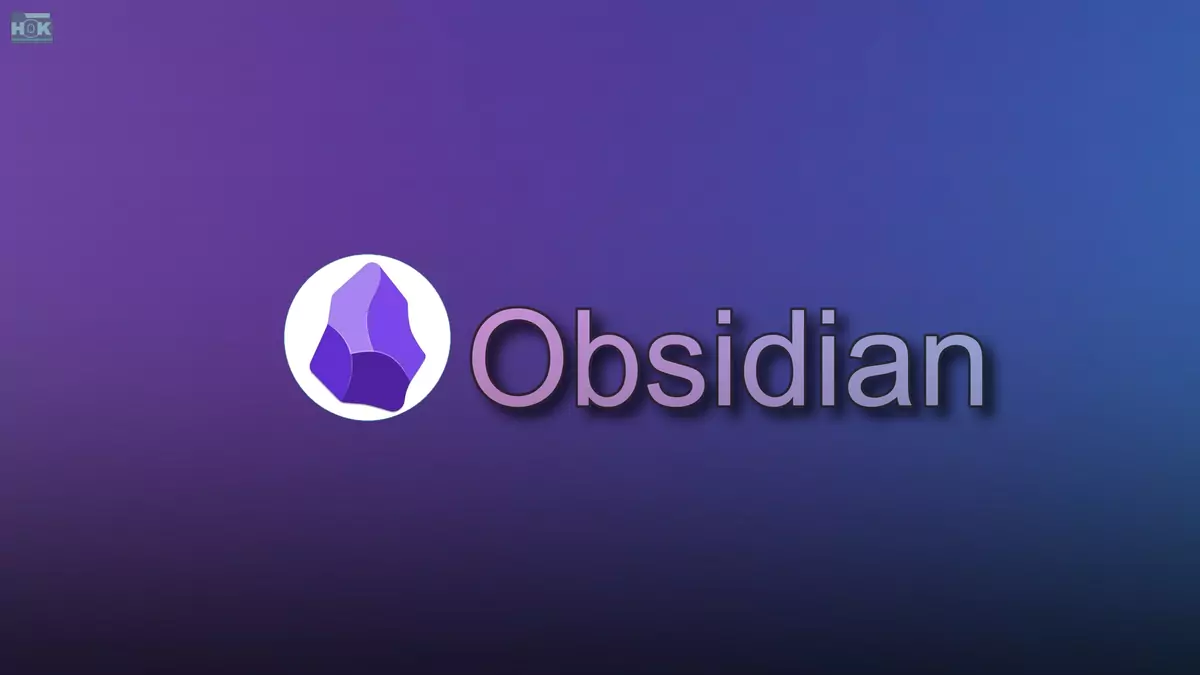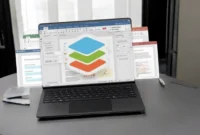Why is Obsidian revolutionizing note-taking and leaving Evernote behind? Why switch from Evernote to Obsidian? This article will explore Obsidian’s advantages over Evernote, including local storage, note formats, interoperability, customization, and offline access. We’ll also discuss Evernote’s limitations and how Obsidian addresses these shortcomings.
The note-taking landscape has evolved over the years. Evernote remains the go-to choice for note-taking, but newer solutions like Obsidian offer a more powerful and flexible approach to creating a digital filing cabinet. If you’re tired of Evernote’s closed features and annoying limitations, it’s time to give Obsidian a try. In this article, I’ll explore why Obsidian leaves Evernote in the dust, and why you should seriously consider switching.

Why is Obsidian revolutionizing note-taking and leaving Evernote behind?
Obsidian revolutionizes note-taking with powerful features like bidirectional linking, markdown support, and native templates. Unlike Evernote’s cloud-based approach, Obsidian’s non-linear knowledge graph model allows users to connect ideas deeply. It’s ideal for advanced users and knowledge management. Here’s a look at why Obsidian is leaving Evernote behind and why you should consider changing:
Open Source Flexibility and Extensibility
Obsidian’s biggest advantage over Evernote is its open-source nature. Obsidian offers complete flexibility in terms of customization. You can customize your note-taking experience with a variety of themes, plugins, and options to make it your own. This level of customization allows you to tailor the app’s interface and functionality to your unique needs. Whether you need a minimalist setup or a highly complex workflow, Obsidian can be customized to meet your needs.
Evernote, on the other hand, operates within a closed ecosystem. It provides a lot of features, but they are set in stone and users have little control over them. Additionally, Evernote’s most advanced features, such as offline access and advanced search, are locked behind a subscription fee wall. Obsidian, on the other hand, offers these features for free, and there are premium features that are available with a paid subscription, but even the free version offers a lot of value.
Markdown-based notes
Obsidian uses Markdown, a lightweight and widely used markup language, to format notes. Markdown files are simple text files that can be easily opened and edited in other programs, giving you complete control over your data. This makes it easy to export or share your notes with others without being locked into a proprietary format. Obsidian’s live preview feature lets you see your notes rendered in the proper format, but the underlying text remains simple and easily transferable.
In contrast, Evernote uses a rich text format, which may seem convenient at first, but it has significant drawbacks. The proprietary nature of Evernote’s format means that it can be difficult to integrate your data with its platform, making it difficult to export or migrate your notes to another service in the future. If Evernote were to shut down its service or change its pricing model, users might be scrambling to keep their notes.
Local storage and data control
One of the unique features of Obsidian is that it works on local storage. All your notes are saved directly to your device as text files, which means you have complete control over your data. You can back up your notes at any time, and if you want, you can sync them with other services like Dropbox or Google Drive. This approach ensures that your data remains private and under your control, without relying on a cloud server.
Evernote, on the other hand, stores your data in the cloud. This makes it easy to sync notes between devices, but it does mean that you have to trust Evernote’s servers with your data. If Evernote experiences a server outage or changes its privacy policy, your notes could be at risk. Obsidian’s native design avoids these concerns, giving you peace of mind about the security and ownership of your data.
Connections and Knowledge Management
One of Obsidian’s greatest strengths is its ability to help users build their own knowledge base. Its primary function is to connect notes together to create coherent ideas and insights. This is especially useful for those who research, write, and manage large amounts of data. Obsidian’s “Graphic View” lets you visualize how your notes are connected, making it easier to explore relationships between concepts and discover new insights.
While Evernote allows users to connect notes together, this feature isn’t as deeply integrated or visual as Obsidian’s. Obsidian’s ability to create knowledge graphs and its focus on building a network of notes sets it apart from Evernote and makes it a good fit for users who want to build a long-term, interconnected knowledge base.
Cost-effectiveness
Obsidian is free for most users, with the option to upgrade to the premium version for additional features such as cross-device syncing and publishing notes online. However, basic features like internal storage, Markdown support, and installing plugins are free, making it a budget-friendly tool for anyone who wants to take notes without paying a subscription fee.
In contrast, Evernote offers a free plan with significant limitations, such as limiting the number of devices you can sync with and the amount of data you can upload. Many of Evernote’s features, such as advanced search and PDF annotation, are locked behind a paid subscription, making it a more expensive option in the long run.
Privacy and Security
Thanks to its local storage model, Obsidian offers a higher level of privacy and security than Evernote. Since your notes are stored directly on your device, you don’t have to worry about your data being stored on third-party servers or changing the service’s privacy policy. If your privacy is a concern, Obsidian gives you peace of mind by keeping your data under your control.
On the other hand, Evernote stores your data on its own servers, which means you have to trust the service’s security measures. While Evernote takes steps to protect user data, its cloud-based storage model means you can’t control who has access to your notes.
Why switch from Evernote to Obsidian?
Evernote and Obsidian are both popular note-taking tools, but they have different strengths and serve different user needs. Here’s why some people decide to switch from Evernote to Obsidian:
Obsidian Advantages:
- Local Storage: Obsidian stores notes locally as plain text files, giving you full control over your data. This ensures compatibility with portable and other text editors or platforms.
- Markdown Formatting: Obsidian uses Markdown, a simple and intuitive language that is easy to learn and use, for formatting. This makes notes easy to read and edit.
- Interoperability: Obsidian’s “graphic view” provides a non-linear, interconnected approach to knowledge organization, visually showing the relationships between notes through links. This can be useful for creating a personal knowledge base.
- Customization and Flexibility: Obsidian is highly customizable, allowing you to customize it to your needs and preferences. You can install plugins, create custom templates, and use various formatting options.
- Offline Access: Obsidian works offline, so you can access your notes anytime, anywhere, without an internet connection.
Why Switch?
If you value flexibility, customization, and a non-linear approach to organizing your knowledge, Obsidian might be the right choice for you. Its open-source nature, Markdown-based notes, and powerful linking capabilities allow you to create a highly personalized, interconnected knowledge base. Obsidian is perfect for those who want full control over their data and prefer a more customizable, local-first note-taking environment.
On the other hand, if cloud-based syncing, a user-friendly interface, and a more traditional note-taking experience are important to you, Evernote might be a better fit. It offers rich text formatting, integration with other tools, and easy access to notes across multiple devices.
Ultimately, the tool that’s best for you comes down to your personal needs and preferences. If you’re unsure which one to choose, it’s a good idea to try out both Evernote and Obsidian and see which one fits your workflow and note-taking style better.
Conclusion
Ultimately, the choice between Obsidian and Evernote comes down to your personal preferences and note-taking style. Obsidian is a good choice for users who want flexibility, customization, and the ability to create a unified knowledge base, with a controlled, non-linear organization. Evernote remains a solid choice for those who value cloud-based syncing and a traditional interface, while it also becomes a solid choice for those who value simplicity and cross-device access. Both tools have their own unique strengths, so it’s worth trying each one to find the one that best suits your needs. Choosing a note-taking tool can significantly increase your productivity and organization.


